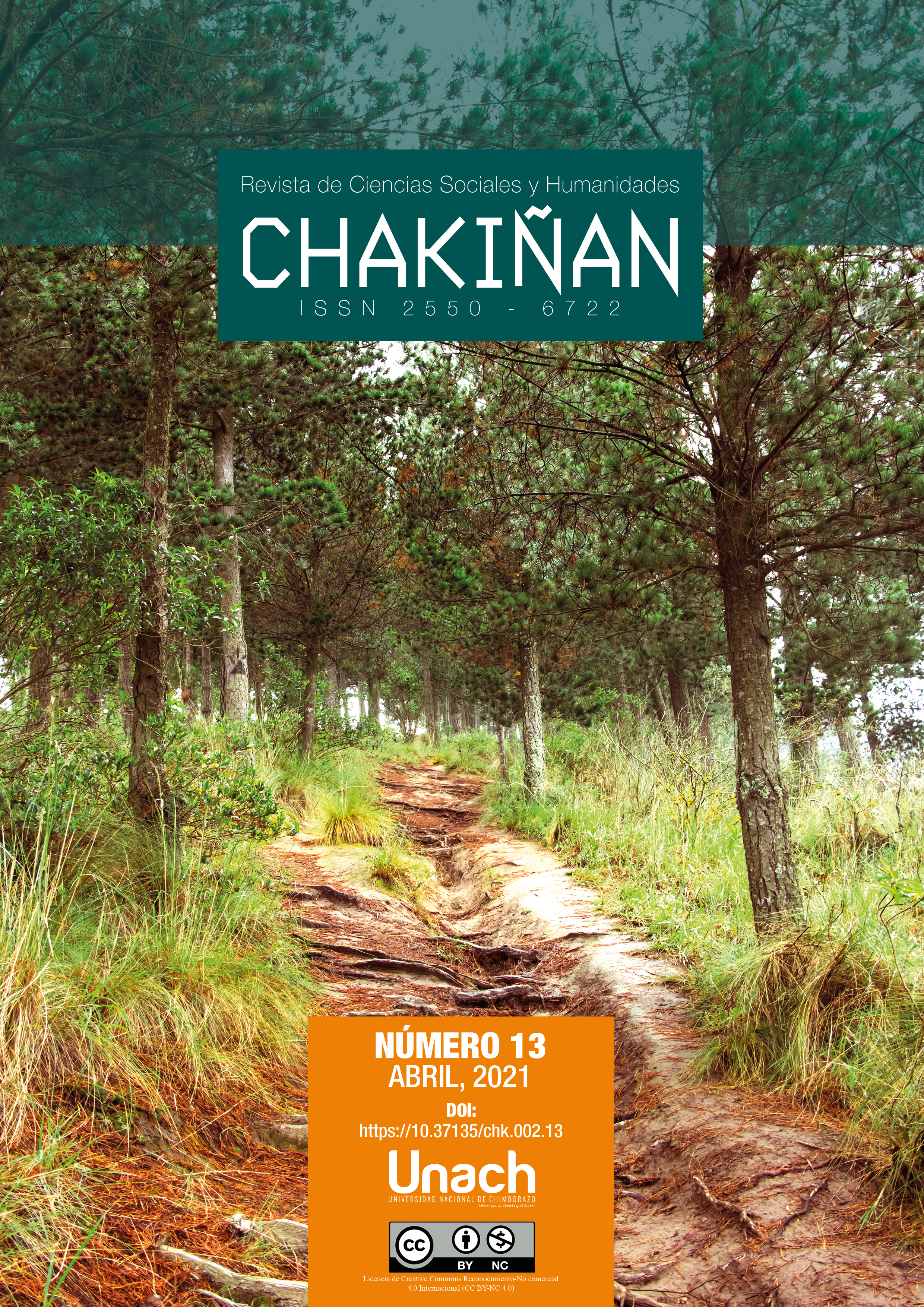GEOMETRIC ELEMENTS IDENTIFIED IN THE INGAPIRCA ARCHAEOLOGICAL COMPLEX
Main Article Content
Abstract
Ingapirca is considered one of the most important archaeological sites in Ecuador; thus, it has been the object of analysis from a military, political, religious, strategic, and astronomical viewpoint. This work aims to describe the geometric elements present in those archaeological remains, from a direct observation thereof and through the bibliographic review of previous studies. It has been determined that the Cañari-Inca culture employed geometric elements in their edifications. The most frequent geometric elements were: lines, circles, triangles, squares, rectangles, trapezoids, ovals, cubes, spheres, semi-spheres, cylinders, which can be found, for example, in the vestiges of roads, rooms, ceremonial centers, stairways, water channels. No evidence of a measurement pattern has been found; however, with what has been observed, it is shown that their mathematical knowledge, in the geometric aspect, is comparable with that of other pre-Columbian civilizations.
Downloads
Article Details
Conference Proceedings Volume
Section

This work is licensed under a Creative Commons Attribution-NonCommercial 4.0 International License.
Responsibility of the authors:
The authors are responsible for the ideas and data collected in the manuscripts. They are additionally accountable for the fidelity of the information, the correction of the citations, the right to publish any material included in the text, and the presentation of the manuscript in the format required by the Journal (WORD template). A manuscript forwarded to CHAKIÑAN must not have been published before, nor must it have been submitted to another means of publication.
Copyright:
Published articles do not necessarily compromise the viewpoint of the CHAKIÑAN JOURNAL. The Journal is aligned to the policy of the licence de Creative Commons Reconocimiento-No comercial 4.0 Internacional (CC BY-NC 4.0). Each author retains the right to the paper published in the Chakiñan journal.
Privacy statement
The personal data and email addresses entered in this magazine will be used exclusively for the purposes stated by the publication and will not be available for any other purpose or person.
How to Cite
Share
References
Alcina, J. (1978). Ingapirca: Arquitectura y áreas de asentamiento. Revista Española de Antropología Americana, 127-146. Recuperado de https://revistas.ucm.es/index.php/REAA/article/view/REAA7878110127A
Almeida, N. (2011). Ingapirca: Guía del Complejo Arqueológico Inca Más Importante del País. Recuperado de https://downloads.arqueo-ecuatoriana.ec/ayhpwxgv/noticias/publicaciones/INPC-X-Ingapirca.pdf
Ayala, M.E. (2008). Resumen de Historia del Ecuador. Quito, Ecuador: Corporación Editora Nacional.
Balboa. W. (2013). Análisis de manejo de la promoción turística del Complejo Arqueológico de Ingapirca (tesis de grado). Pontificia Universidad Católica del Ecuador, Quito, Ecuador. Recuperado de http://repositorio.puce.edu.ec/bitstream/handle/22000/5790/T-PUCE-5948.pdf?sequence=1&isAllowed=y
Blanco-Álvarez, H. (2006). La Etnomatemática en Colombia. Un programa en construcción. Revista BOLEMA: Boletim de Educação Matemática, 19(26), 49-75.
Calle, N. y Delgado, O. (2015). Ingapirca, principal centro turístico del Ecuador. Cultura y turismo. 67, 83-108. Recuperado de https://www.uazuay.edu.ec/bibliotecas/publicaciones/UV-67.pdf
Cárdenas, G. y Quinteros, G. (2011). Cañar, capital arqueológica y cultural del Ecuador: Análisis de su declaración y proyecciones (tesis de grado). Universidad de Cuenca, Ecuador. Recuperado de http://dspace.ucuenca.edu.ec/bitstream/123456789/1959/1/thg411.pdf
Ching, F. D. K. (2002). Arquitectura. Forma, Espacio y Orden. México D. F.: Gustavo Gill.
Escalera, A. y Barriuso, Ma. A. (1978). Estudio científico de los objetos de metal de Ingapirca (Ecuador). Revista española de antropología americana, (8), 19-48. Recuperado de https://dialnet.unirioja.es/servlet/articulo?codigo=902383
Fresco, A. (1984). Excavaciones en Ingapirca (Ecuador):1978-1982. Revista Española de Antropología Americana, 85. Recuperado de https://revistas.ucm.es/index.php/REAA/article/view/REAA8484110085A
Garzón, M. (2010). Nuevos datos para la reconstrucción de la Historia Cultural de Ingapirca. Recuperado de https://issuu.com/catedrabierta/docs/nuevos_datos_sobre_ingapirca__mario_garz_n
Gasparini G. y Margolies, L. (1977). Arquitectura Inka. Venezuela: Centro de Investigaciones Históricas y Estéticas.
Idrovo, J. (1992). Complejo Arqueológico de Ingapirca. Azogues, Ecuador: Comisión del Castillo de Ingapirca.
Morales, J. R. (1984). Arquitectónica: sobre la idea y el sentido de la arquitectura. Santiago de Chile, Chile: Editorial Universitaria.
Quille, J. (2012). Aproximación a la Cultura cañari (tesis de grado). Universidad de Cuenca, Cuenca, Ecuador. Recuperado de http://dspace.ucuenca.edu.ec/handle/123456789/560
Ziolkowski, M. y Sadowaki, R. M. (1984). Informe acerca de las investigaciones arqueo-astronómicas en el área central de Ingapirca (Ecuador). Revista Española de Antropología Americana, XIV, 103-126. Recuperado de https://revistas.ucm.es/index.php/REAA/article/view/REAA8484110103A





